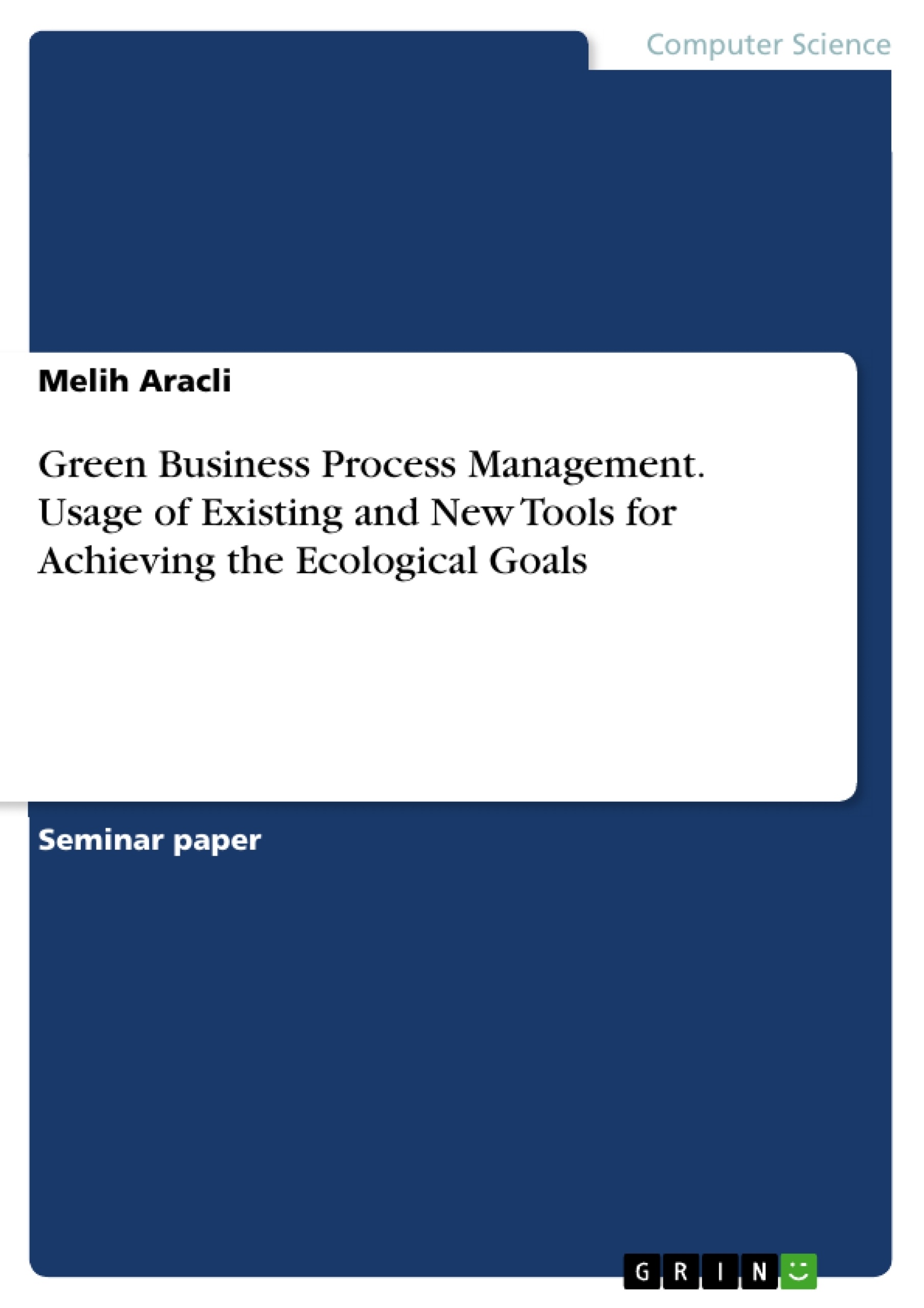The aim of this work is to find relevant approaches of Green Business Process Management (BPM) and analyse them with regard to their purpose. It was considered whether the approaches are extensions of the traditional BPM concepts adapted to the ecological dimension or if they are newer techniques and tools introduced by the rise of Green Information Systems (IS). In order to achieve this goal, the basic concept of BPM and its way towards more sustainability is presented at the beginning followed by the explanation of current approaches. Afterwards, the BPM Lifecycle, which serves as a suitable framework to allocate the different tools and techniques, is introduced. Based on the rough presentation, the main part deals more intensively and in more detail with the tools and techniques of Green BPM approaches. These tools and techniques were mapped into an adapted (Green) BPM Lifecycle so that relevant implications could be derived in the discussion section. But first, the mentioned tools and techniques are classified according their field of acting. Finally, the discussion part takes place where the major contributions are analysed and interpreted according to the observed results and background knowledge.
Companies have been looking at sustainability for several decades, recognizing that by reducing pollution they can also maximize their profits. Thus, sustainability in the field of Information Systems (IS) is becoming increasingly important as topics like Green IS and IT are addressed. These deal with the reduction of IT consumption and emissions because of the implementation of more sustainable business activities. However, this raises the requirement for approaches in the field of Business Process Management. Research and practice lacked an appropriate approach to connect these two areas of Green IS and BPM, which is why the notion of Green Business Process Management was introduced. Experts are developing instruments and techniques whose primary objective is to integrate sustainability into the different phases of the business process Lifecycle so that more ecological processes can be realized. Such approaches help organizations in defining their optimal business strategies regarding the four dimensions of time, quality, flexibility, cost and now adding the aspect of environment.
Inhaltsverzeichnis (Table of Contents)
- Business Process Management in the Green IS Domain
- From BPM to Sustainability
- Business Process Management and Green IS
- Approaches in the field of BPM
- BPM Lifecycle
- Methodology
- Analysis of Green BPM tools and techniques
- Green BPM Approaches
- Mapping into the Lifecycle
- Four application areas of Green BPM approaches
- Discussion
- Holistic consideration
Zielsetzung und Themenschwerpunkte (Objectives and Key Themes)
This seminar thesis examines the integration of sustainability considerations within Business Process Management (BPM) practices. The aim is to explore the concept of Green BPM and its application within the broader field of Green Information Systems (GIS).
- The relationship between BPM and Green IS
- The application of Green BPM approaches in the context of sustainability
- The use of tools and techniques for implementing Green BPM
- The analysis of Green BPM approaches through the BPM lifecycle
- The identification of key application areas for Green BPM
Zusammenfassung der Kapitel (Chapter Summaries)
The first chapter introduces the topic of Business Process Management (BPM) in the context of Green Information Systems (GIS). The second chapter delves into the integration of sustainability concepts within BPM, exploring various approaches and outlining the BPM lifecycle. Chapter three presents the methodology used in the research. Chapter four focuses on the analysis of Green BPM tools and techniques, examining their application areas and mapping them into the BPM lifecycle. Chapter five discusses the findings of the study, while chapter six explores a holistic consideration of the researched concepts.
Schlüsselwörter (Keywords)
This seminar thesis focuses on key concepts related to Green Business Process Management (GBPM), sustainability, and Green Information Systems (GIS). Important terms include BPM approaches, Green BPM approaches, BPM lifecycle, tools and techniques, and application areas.
- Quote paper
- Melih Aracli (Author), 2018, Green Business Process Management. Usage of Existing and New Tools for Achieving the Ecological Goals, Munich, GRIN Verlag, https://www.grin.com/document/505644



